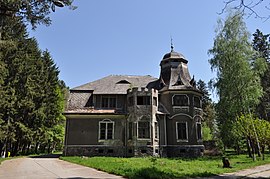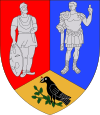
Transylvania is a historical and cultural region in Central Europe, encompassing central Romania. To the east and south its natural border is the Carpathian Mountains and to the west the Apuseni Mountains. Broader definitions of Transylvania also include the western and northwestern Romanian regions of Crișana and Maramureș, and occasionally Banat. Historical Transylvania also includes small parts of neighbouring Western Moldavia and even a small part of south-western neighbouring Bukovina to its north east.
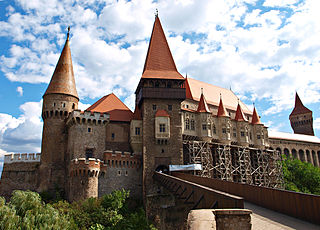
Hunedoara is a city in Hunedoara County, Transylvania, Romania. It is located in southwestern Transylvania near the Poiana Ruscă Mountains, and administers five villages: Boș (Bós), Groș (Grós), Hășdat, Peștișu Mare (Alpestes), and Răcăștia (Rákosd).

Deva (Romanian pronunciation:[ˈdeva] ; Hungarian: Déva, Hungarian pronunciation: [ˈdeːvɒ]; German: Diemrich, Schlossberg, Denburg; Latin: Sargetia; is a city in Romania, in the historical region of Transylvania, on the left bank of the river Mureș. It is the capital of Hunedoara County.
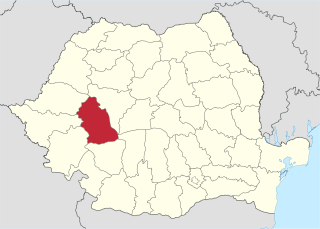
Hunedoara County is a county (județ) of Romania, in Transylvania, with its capital city at Deva. The county is part of the Danube–Criș–Mureș–Tisa Euroregion.
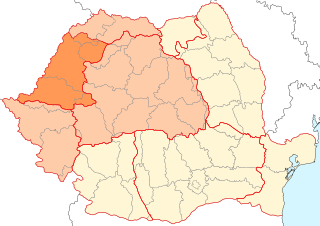
Crișana is a geographical and historical region in north-western Romania, named after the Criș (Körös) River and its three tributaries: the Crișul Alb, Crișul Negru, and Crișul Repede. In Romania, the term is sometimes extended to include areas beyond the border, in Hungary; in this interpretation, the region is bounded to the east by the Apuseni Mountains, to the south by the Mureș River, to the north by the Someș River, and to the west by the Tisza River, the Romanian-Hungarian border cutting it in two. However, in Hungary, the area between the Tisza River and the Romanian border is usually known as Tiszántúl.

Hunyad was an administrative county (comitatus) of the Kingdom of Hungary, of the Eastern Hungarian Kingdom and of the Principality of Transylvania. Its territory is now in Romania in Transylvania. The capital of the county was Déva.
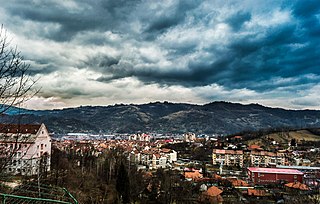
Petroșani is a city in Hunedoara County, Transylvania, Romania, with a population of 31,044 as of 2021. The city has been associated with mining since the 19th century.

Corvin Castle, also known as Hunyadi Castle or Hunedoara Castle, is a Gothic-Renaissance castle in Hunedoara, Romania. It is considered one of the largest castles in Europe and is featured as one of the Seven Wonders of Romania.
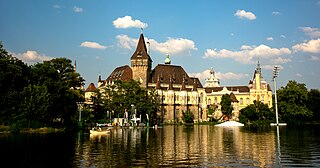
Vajdahunyad Castle is a castle in the City Park of Budapest, Hungary. It is a copy of Hunyad Castle, known as Corvin Castle, in Hunedoara, Romania. It was built in 1896 as part of the Millennial Exhibition which celebrated the 1,000 years of Hungary since the Hungarian Conquest of the Carpathian Basin in 895. The castle was designed by Ignác Alpár to feature copies of several landmark buildings from different parts of the Kingdom of Hungary, especially the Hunyad Castle in Transylvania. As the castle contains parts of buildings from various time periods, it displays different architectural styles: Romanesque, Gothic, Renaissance, and Baroque. Originally, it was made from cardboard and wood, but it became so popular that it was rebuilt from stone and brick between 1904 and 1908. Today, it houses the Museum of Hungarian Agriculture, the biggest agricultural museum in Europe.
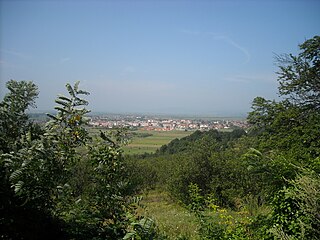
Hațeg is a town in Hunedoara County, Romania with a population of 8,793 as of 2021. Three villages are administered by the town: Nălațvad (Nalácvád), Silvașu de Jos (Alsószilvás), and Silvașu de Sus (Felsőszilvás). It is situated in the southwestern reaches of the historical region of Transylvania.

Stephen Bethlen de Iktár was the Prince of Transylvania in late 1630.
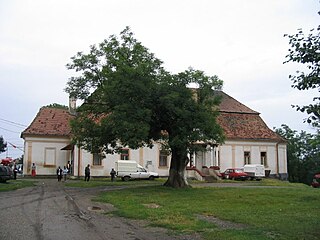
Voivodeni is a commune in Mureș County, Transylvania, Romania. It is composed of two villages, Toldal (Toldalag) and Voivodeni. The former village is much less populated than the latter.

The Râul Mare is a left tributary of the river Strei in Romania. It discharges into the Strei in Subcetate. Its source is in the Retezat Mountains. It flows through the reservoirs Gura Apelor, Ostrovul Mic, Păclișa and Hațeg. Its length is 64 km (40 mi) and its basin size is 915 km2 (353 sq mi).
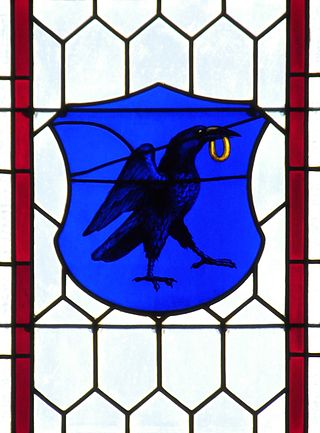
The name Corvin comes from the Latin name Corvinus which derives from the Latin word corvus meaning raven, although the word today refers to the birds' genus including ravens and crows among others.

Bătrâna is a commune in Hunedoara County, Transylvania, Romania. It is composed of four villages: Bătrâna, Fața Roșie, Piatra, and Răchițaua.

Sântămăria-Orlea is a commune in Hunedoara County, Transylvania, Romania. It is composed of nine villages: Balomir (Balomir), Bărăștii Hațegului (Baresd), Bucium-Orlea (Bucsum), Ciopeia (Csopea), Săcel (Szacsal), Sânpetru (Szentpéterfalva), Sântămăria-Orlea, Subcetate (Hátszegváralja), and Vadu (Vád).

The Govăjdia Blast Furnace is a disused blast furnace in Govăjdia village, Ghelari Commune, Hunedoara County, in the Transylvania region of Romania.

Țara Hațegului is a historical and ethnographical area in Hunedoara County, Romania, in the south-western corner of Transylvania. It is centered in the town of Hațeg.
